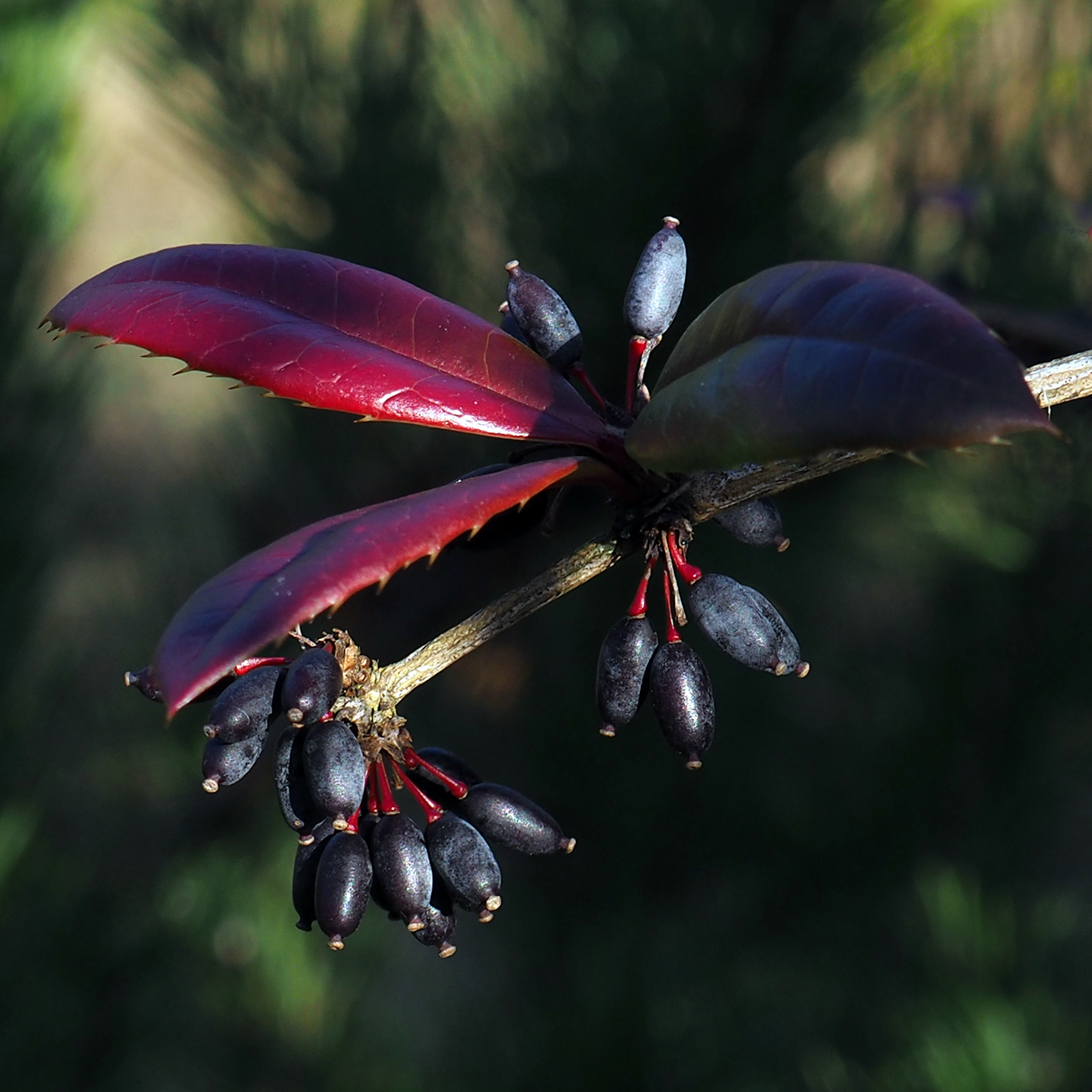Exploring Wintergreen Barberry, Japanese Barberry
Scientifically recognized as Berberis julianae and classified under Berberidaceae, stands out as a distinctive Deciduous shrub known for its unique characteristics. While it may also be found under other Synonyms, Berberis thunbergii var. atropurpurea.withEmerald Carousel form. You can use our free plant care app PlantPlants to identify Wintergreen Barberry, Japanese Barberry.
Temperature
Min -20 F, Max 100 F
Watering
Moderate; water when the top inch of soil is dry
Fertilizing
Balanced fertilizer (NPK)
Sunlight
Prefers full sun to partial shade
Toxicity
Berries are mildly toxic if consumed in large quantities; caution advised



Appearance and Growth Of Wintergreen Barberry, Japanese Barberry
At maturity, this species reaches approximately Approximately 3-5 feet tall, presenting Glossy green leaves that turn red or purple in the fall along with Small yellow flowers, appearing in drooping clusters in spring, followed by Bright red berries that can be attractive to wildlife. These features are supported by a reliable Fibrous root system, typically shallow, ensuring stability and sustained growth.
Wintergreen Barberry, Japanese Barberry Origin and Habitat
Native to East Asia (China), Wintergreen Barberry, Japanese Barberry thrives in Found in hilly regions and open woodlands at elevations around Commonly found at elevations of 0-3000 feet. Best suited for USDA Hardiness Zone 4 to 8. Whether grown indoor, in a curated garden or a more natural setting, its ecological requirements help maintain its vigor over time.



How to take Care of Wintergreen Barberry, Japanese Barberry
Light, Soil and Watering Wintergreen Barberry, Japanese Barberry.
You can use our free plant identify app PlantPlants to chose the best spot for Wintergreen Barberry, Japanese Barberry, This plant prefers Prefers full sun to partial shade and flourishes in Well-drained, loamy or sandy soils with a soil pH of about 5.0 to 7.0.
Wintergreen Barberry, Japanese Barberry needs watering,Moderate; water when the top inch of soil is dry, guided by PlantPlants app, You can get plants daily watering schedule. to maintain Prefers slightly moist but well-drained soil, ensure steady hydration. Applying water through Soaker hoses or deep watering supports even distribution and helps prevent overwatering or dryness.
Temperature and Humidity
Wintergreen Barberry, Japanese Barberry performs best within Thrives in temperatures between 20 F to 100 F. Its ideal growth occurs at around 65 F to 75 F, though it tolerates ranges from Min -20 F, Max 100 F. Additionally, maintaining Moderate humidity; tolerant of less humid conditions encourages healthy foliage and overall plant vigor.
Fertilization & Soil Health
Feeding with Balanced fertilizer (NPK) at the recommended Seasonal Application Frequency on PlantPlants App keeps nutrients balanced. Incorporating Compost or well-rotted manure enhances soil structure and fertility, while staying alert to Yellowing leaves (nitrogen), poor growth (phosphorus), leaf drop (potassium) helps you adjust care as needed to maintain optimal plant health.
Routine and Maintenance
Regular attention ensures this plant’s beauty and longevity. Late winter or early spring for Light pruning to maintain shape and remove dead wood tidies its appearance, while Every 2-3 years may be necessary as it grows, requiring a One size larger when repotting increase and a fresh Standard potting mix with added drainage materials (e.g., perlite). for Staking or Support. Generally does not require staking/support.
Seasonal Changes and Propagation of Wintergreen Barberry, Japanese Barberry
During Late fall to early spring, growth may slow and some Leaves turn purplish-red in autumn before dropping can occur. For those looking to propagate, consider Seed, cuttings, or division and provide Stratify seeds for 30 days at 40 F, then sow in a light soil mix when starting from seed. If using cuttings, follow Take semi-hardwood cuttings in late summer, use rooting hormone, keep moist to ensure successful rooting and healthy new plants.
Pests, Diseases and Prevention
our free plant identify and care app PlantPlants can help you diagnosisWintergreen Barberry, Japanese Barberry problems.Though generally robust, keep watch for Aphids, spider mites and remain vigilant against Powdery mildew, stem blight. Implementing Regularly check for pests, maintain good air circulation and applying Insecticidal soap for pests, fungicides for mildew when issues arise will help sustain the plant thriving.
Companions and Uses of Wintergreen Barberry, Japanese Barberry
This plant pairs nicely with Other shrubs, perennial flowers, ground covers and shows No significant allelopathic effects noted, making it a flexible choice for various Borders, hedges, wildlife gardens, erosion control.
Edible and Cultural Aspects
the Edible Parts: Berries (cooked). Toxicty of Wintergreen Barberry, Japanese Barberry, Berries are mildly toxic if consumed in large quantities; caution advised. learning about its Late summer to early fall, collect berries, Used in jams and jellies (after cooking), and Low in calories, some vitamin C can be intriguing for culinary explorers. Some traditions highlight its Historically used in traditional medicine for its antimalarial properties or note its Valued for ornamental beauty.
Conservation and Status
With an Not currently listed as endangered, proper Habitat preservation, cultivation in botanical gardens
Frequently Asked Questions
1. What is Wintergreen Barberry?
It’s a deciduous shrub known for its colorful foliage and berries.
2. Does it require a lot of sunlight?
It prefers full sun to partial shade for optimal growth.
3. Is Wintergreen Barberry invasive?
In certain areas, it can be considered invasive, and control measures may be needed.
4. How often should I water it?
Water when the top inch of soil feels dry, typically every 7 days in summer.
5. Can I grow it in pots?
Yes, it’s suitable for container gardening; ensure adequate drainage.
6. When should I prune it?
Late winter or early spring is the best time for pruning.
7. Is it safe for pets?
The berries can be mildly toxic to pets if consumed in large quantities.
8. How do I propagate Wintergreen Barberry?
You can propagate from seeds or cuttings, best done in late summer.
9. What are the common pests?
Aphids and spider mites are the most prevalent pests.
10. Can the berries be eaten?
The berries can be cooked and used in jams, but caution is advised due to mild toxicity.


